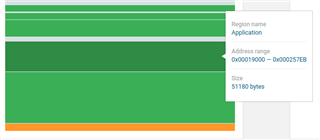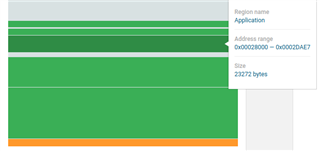Hi,
I have developed an application for nrf52810 and now it needs an additional feature of saving several integer values to flash, so they are available even after power loss.
Besides the application, there is a bootloader, softdevice, and bl_settings in memory. My question is if it is possible to do this with the memory that is left?
I know there is a limitation on minimal memory required to do this. Currently, as I see there are 33533 bytes free.
And if this is possible what is the preferred way to do this. 

I am working with nRF5SDK v15.3.0
Best regards,
Vojislav.

